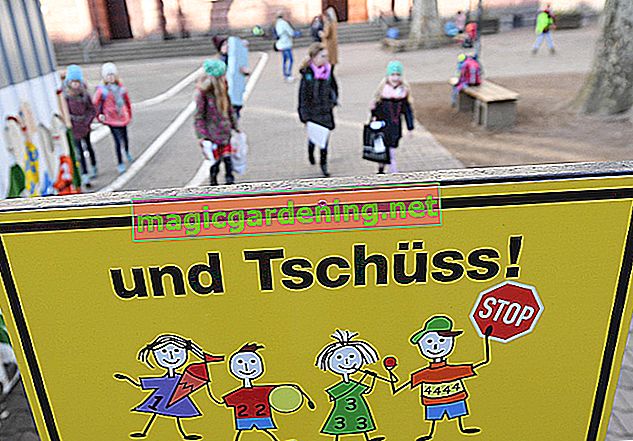
Possible diseases and pests
- mildew
- Root rot
- Aphids
- Spider mites
Wrong location
If the black-eyed Susanne does not bloom, she may not get enough light. It needs at least three hours of sun exposure, especially during the flowering period.
also read
- Green the balcony with the black-eyed Susanne
- Collect and sow seeds of the black-eyed Susanne
- Yellow leaves at the black-eyed Susanne - what to do?
If the location is too cold, this also affects the black-eyed Susanne. It then remains rather small and you will probably wait in vain for flowers.
Do not plant or place the climbing plants too densely. The air must be able to circulate. Otherwise, powdery mildew and pests will spread on the leaves.
Bad care
The soil in the garden or pot must always be moderately moist. As soon as the soil surface is dry, the black-eyed Susanne needs water. Make sure that the water can drain off well so that no waterlogging occurs.
If the leaves start to rot, the soil is likely too moist. Provide better drainage to prevent root rot.
If the leaves turn yellow and fall off, you should examine the black-eyed Susan for spider mites and treat an infestation immediately.
Pest infestation during the winter
Black-eyed Susanne is particularly troubled by pests when she hibernates in the house.
Before you bring the plant indoors, check the leaves for aphids and spider mites, both on the top and bottom of the leaf.
Get rid of the pests with soapy water or other suitable means. Chemical agents that you can get from specialist gardeners often help with spider mites.
Do not put plants with pest infestation in winter quarters
Lice and mites spread particularly quickly in warm rooms and also attack other plants.
Either stand an infested black-eyed Susan separately or dispose of her and sow new plants next year.
Tips & Tricks
Strong plants cope better with pests than sick ones. Give the black-eyed sun some horn shavings (€ 6.39 at Amazon *) to improve the health of the soil. This strengthens the climbing plant and is not stressed too much by lice and mites.








